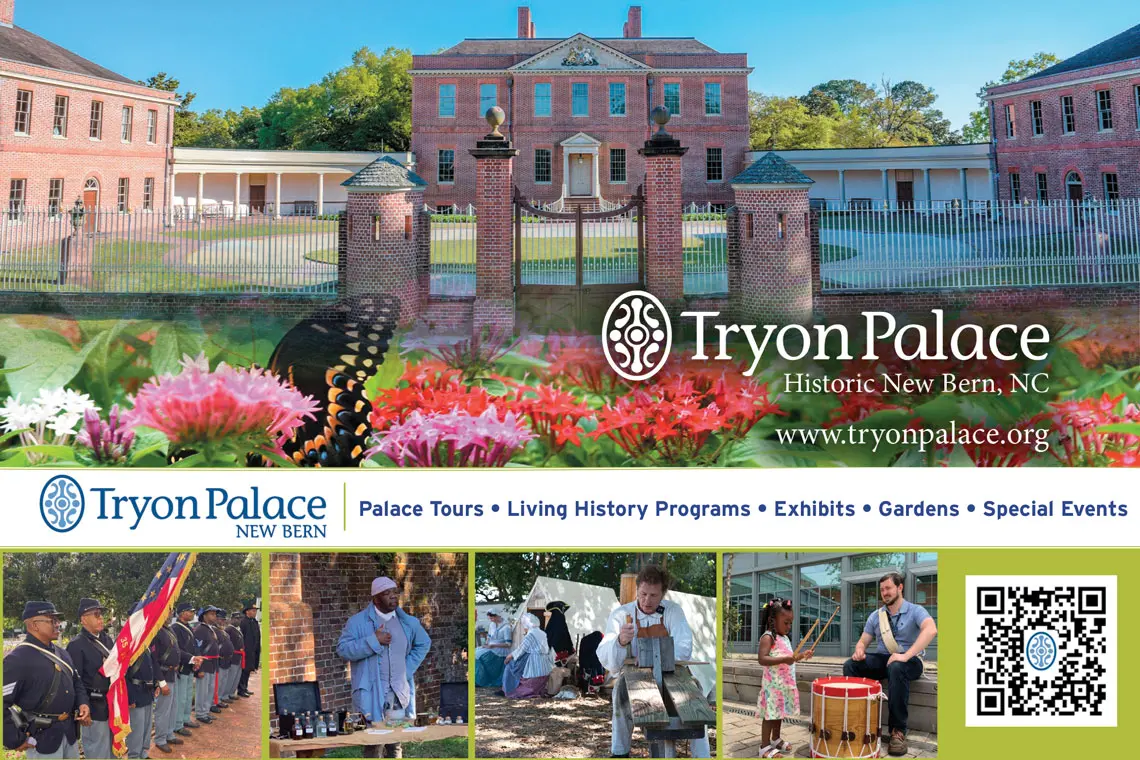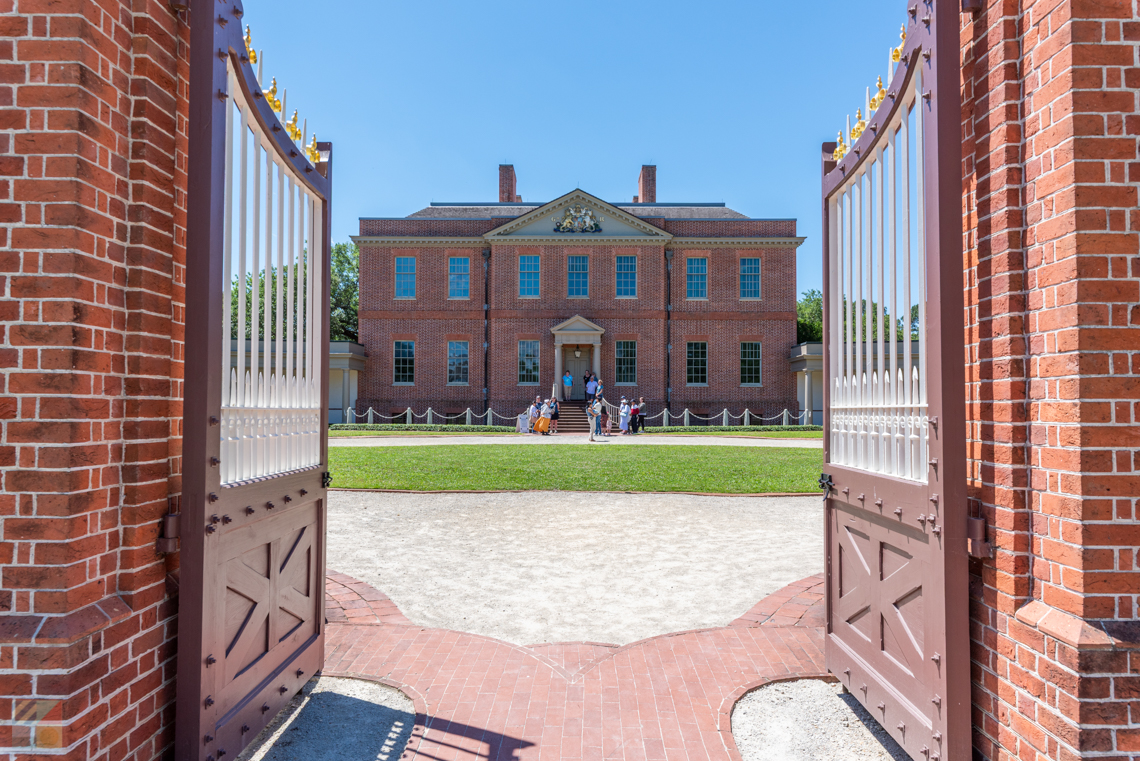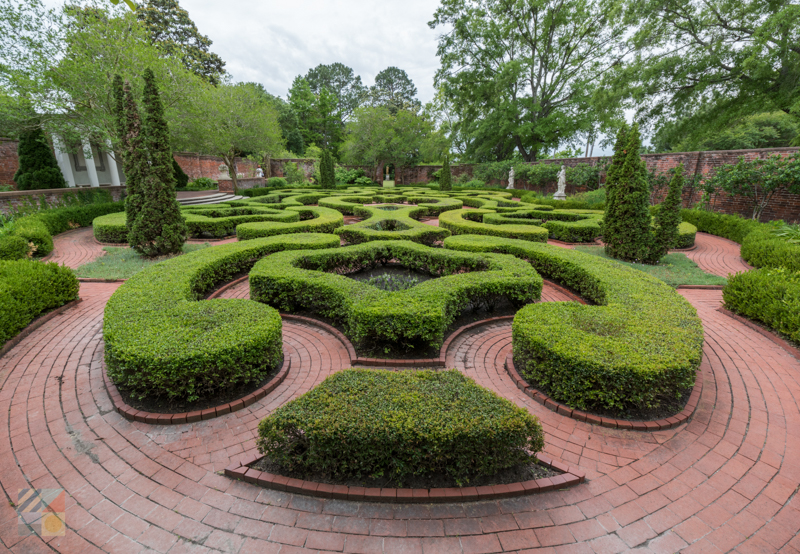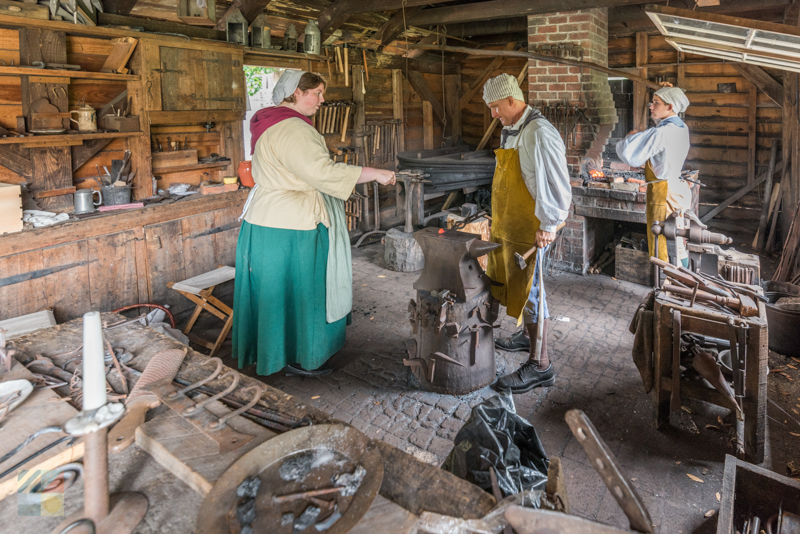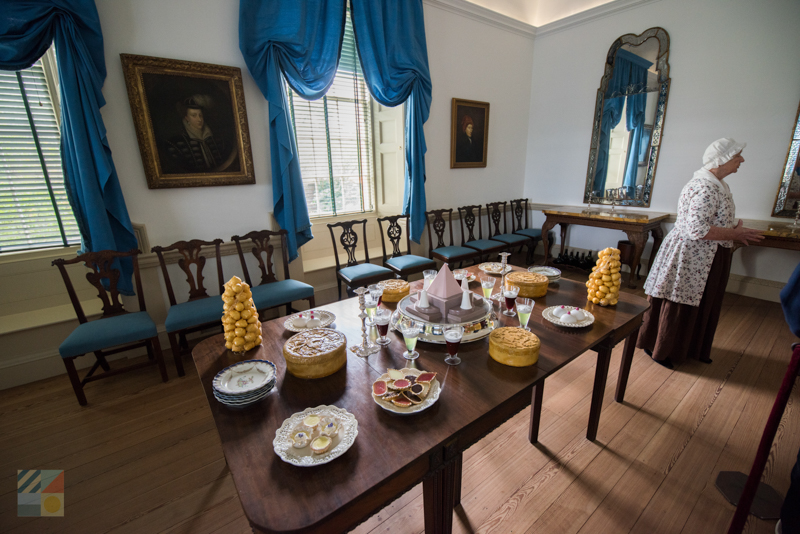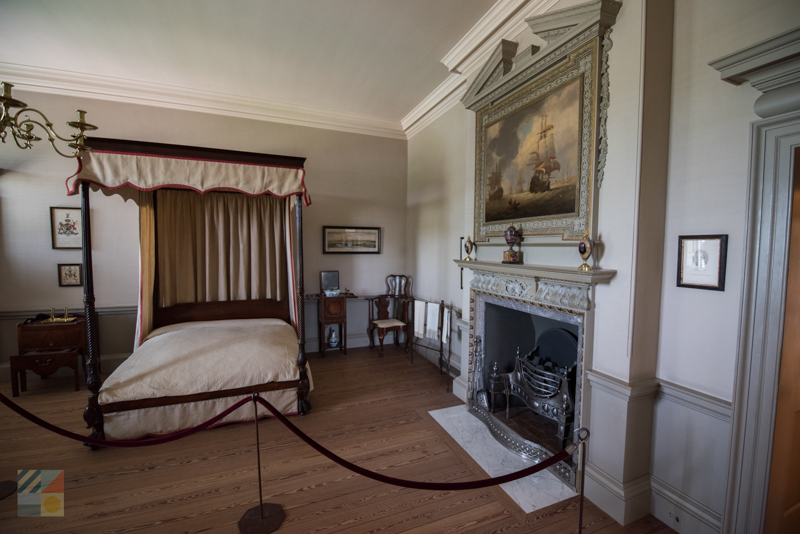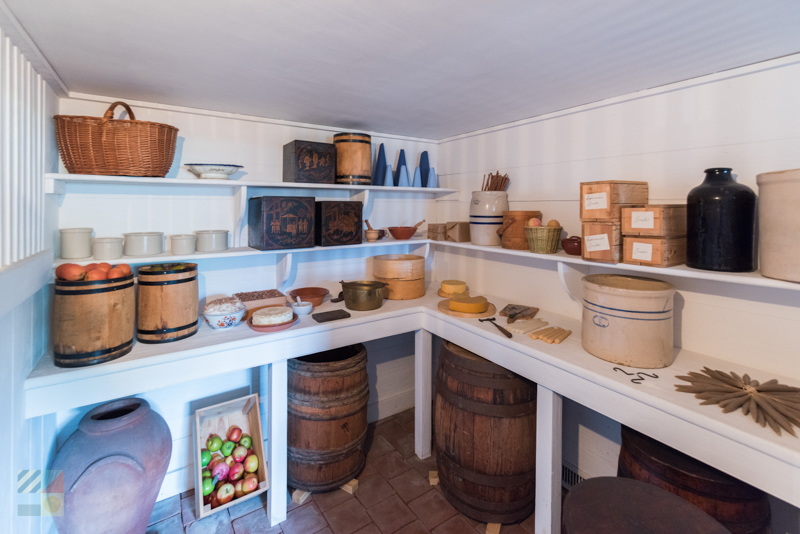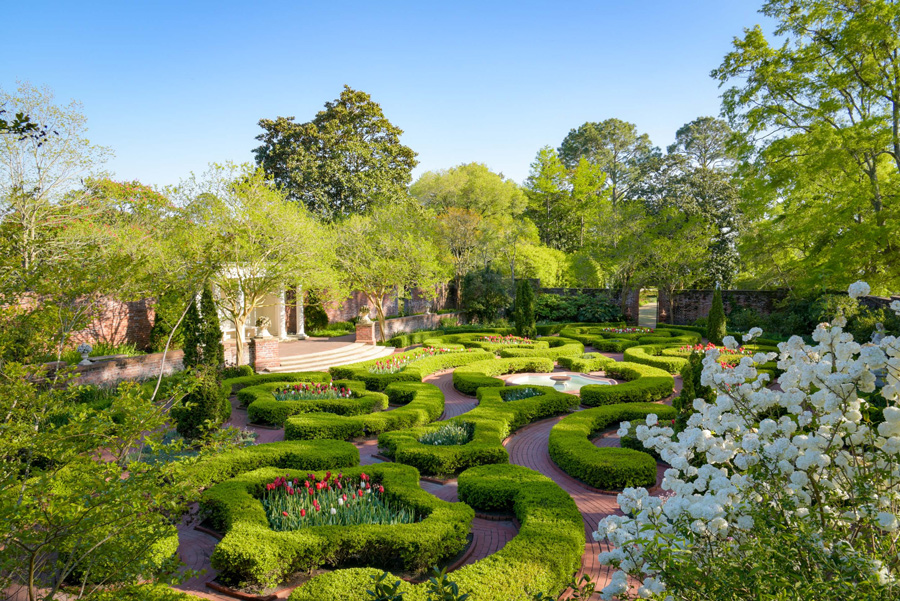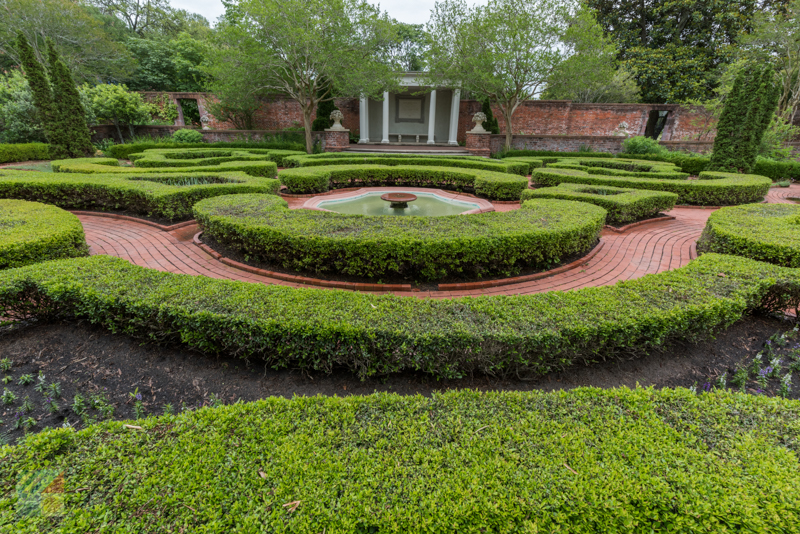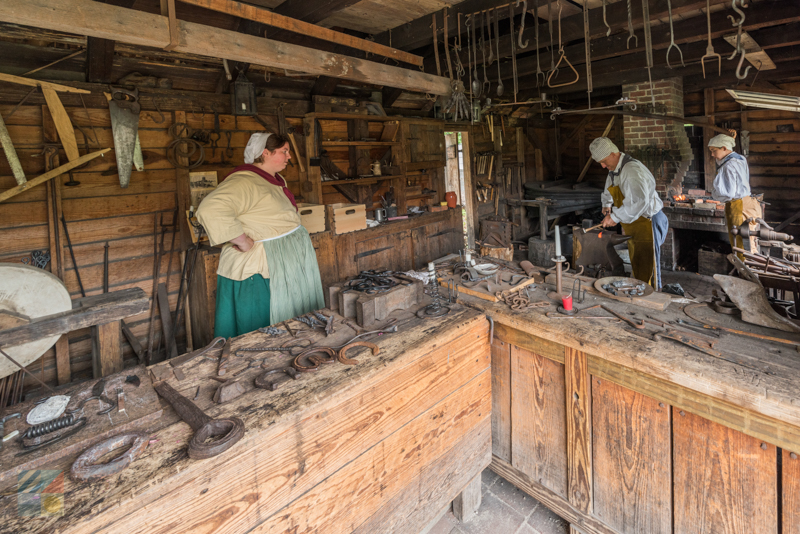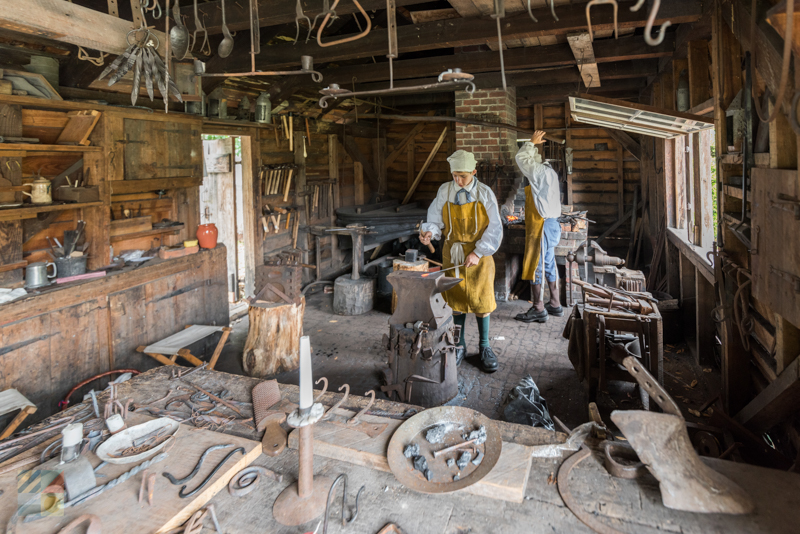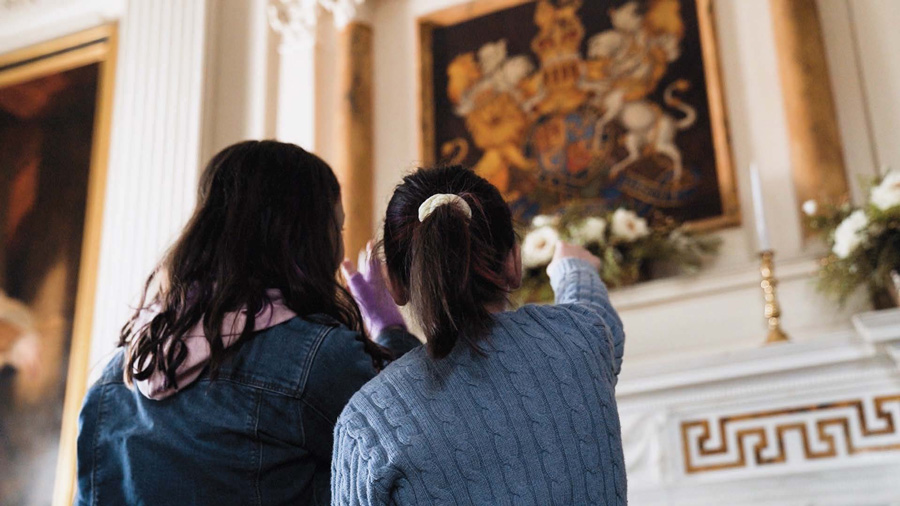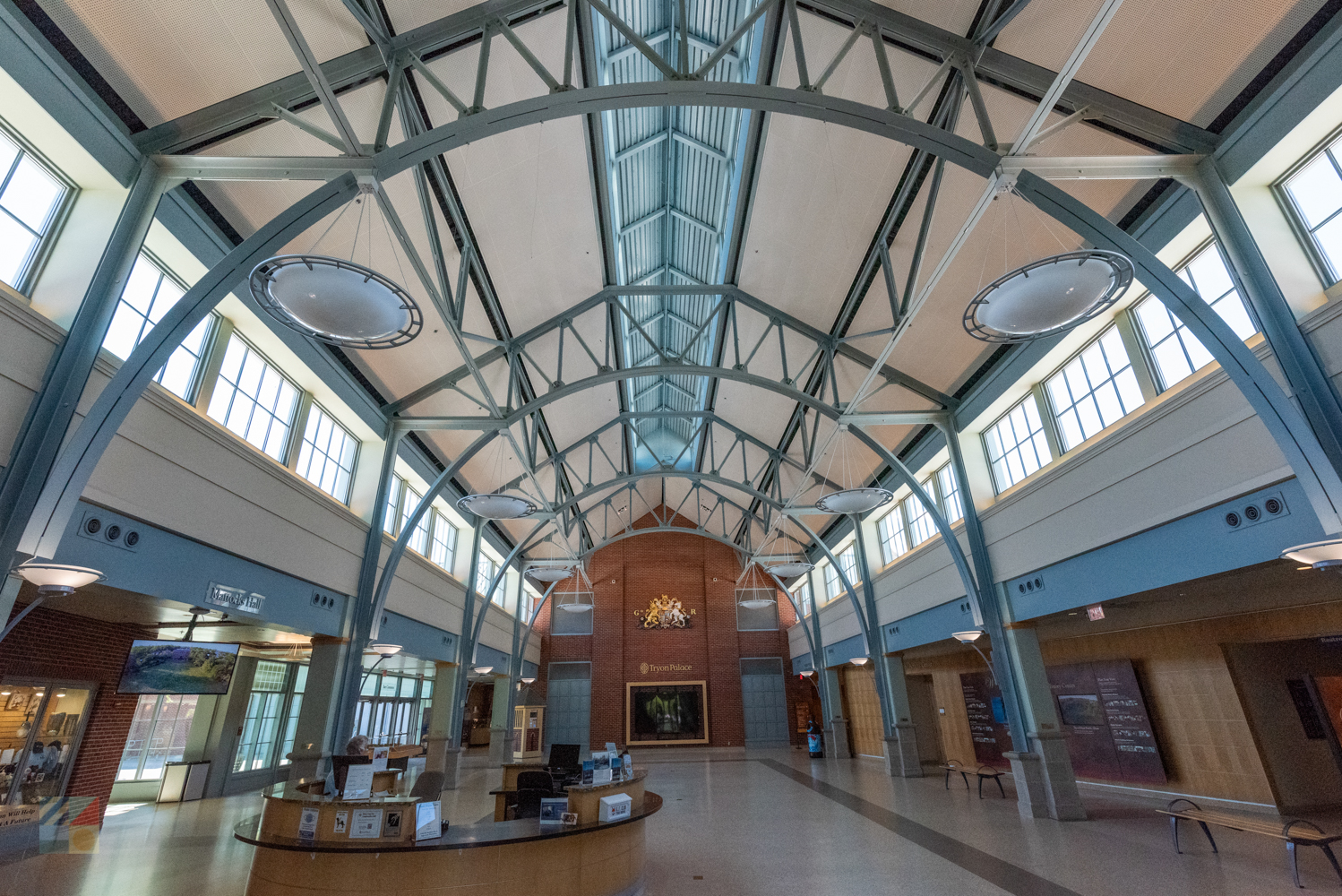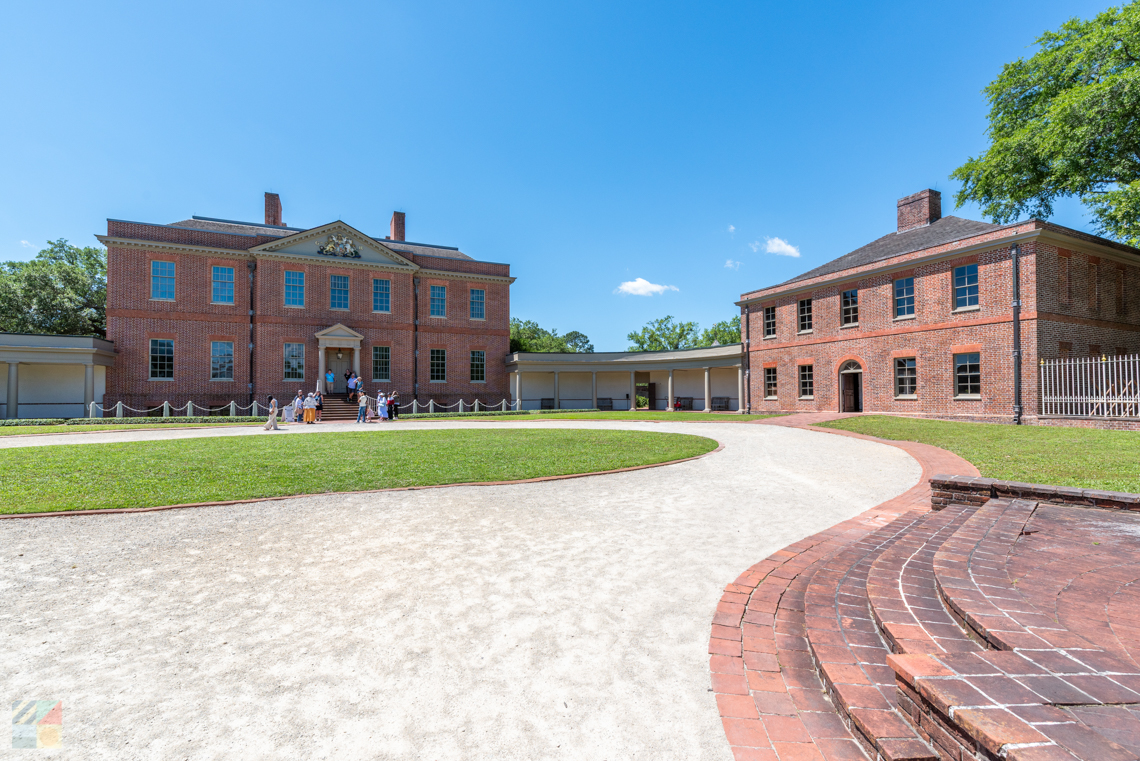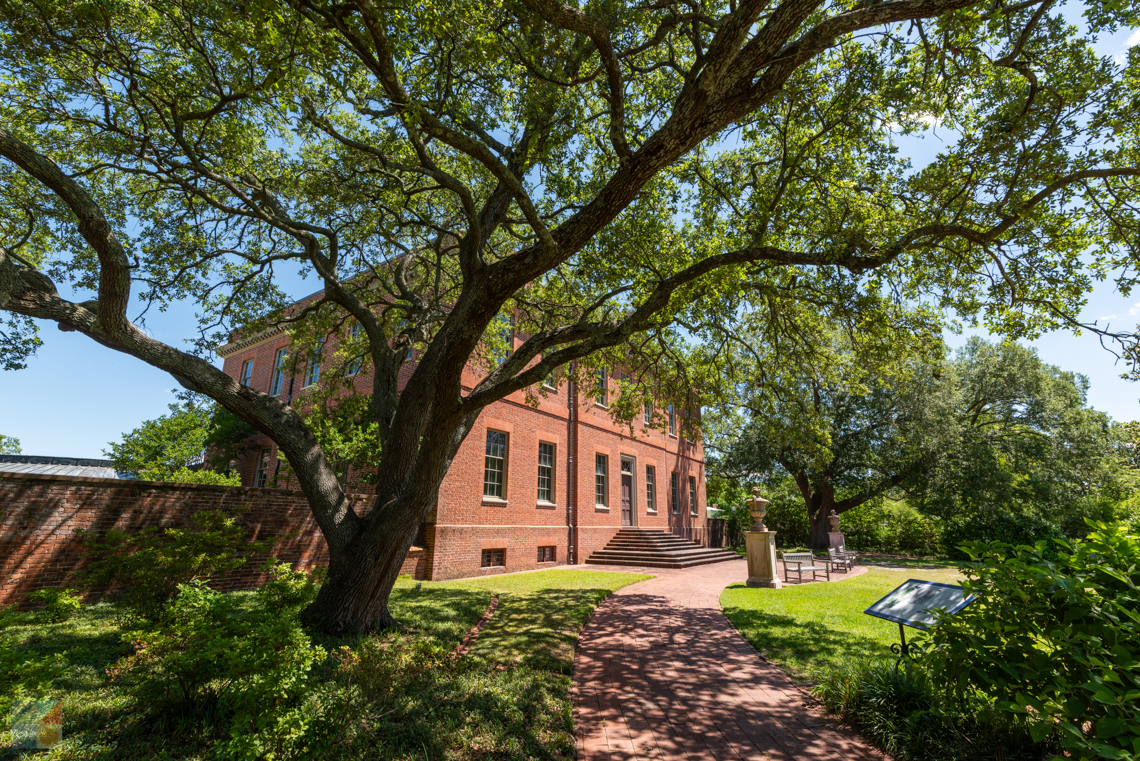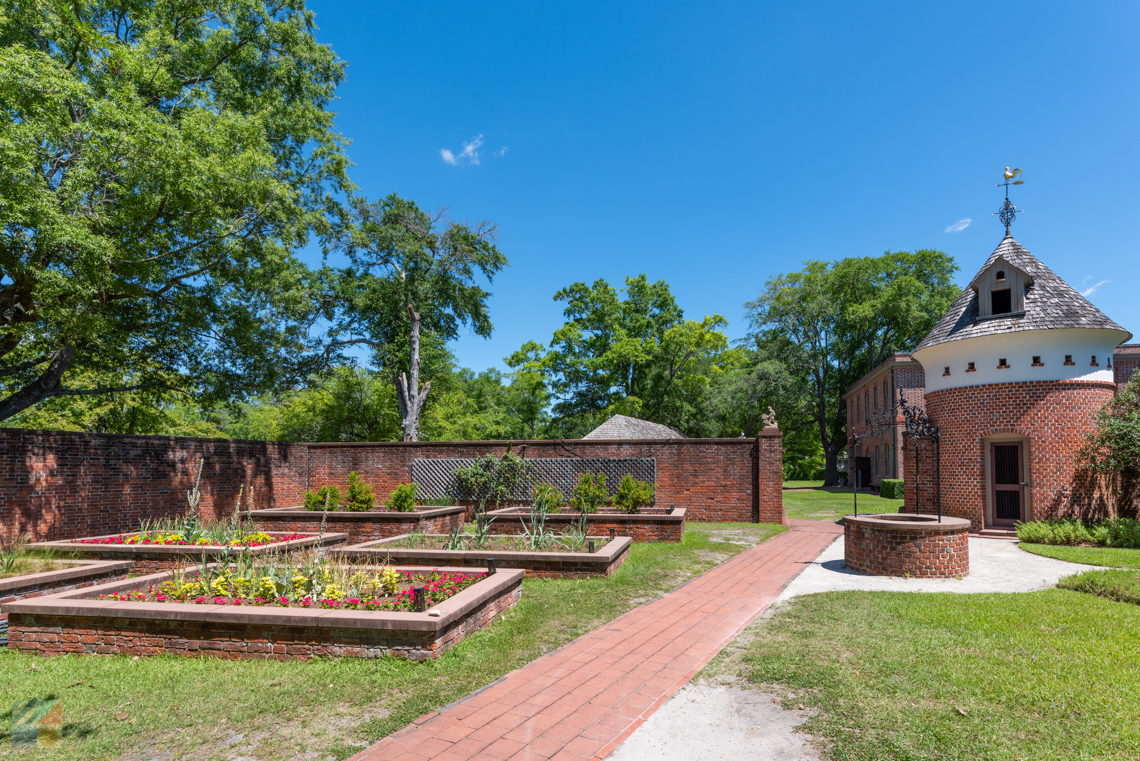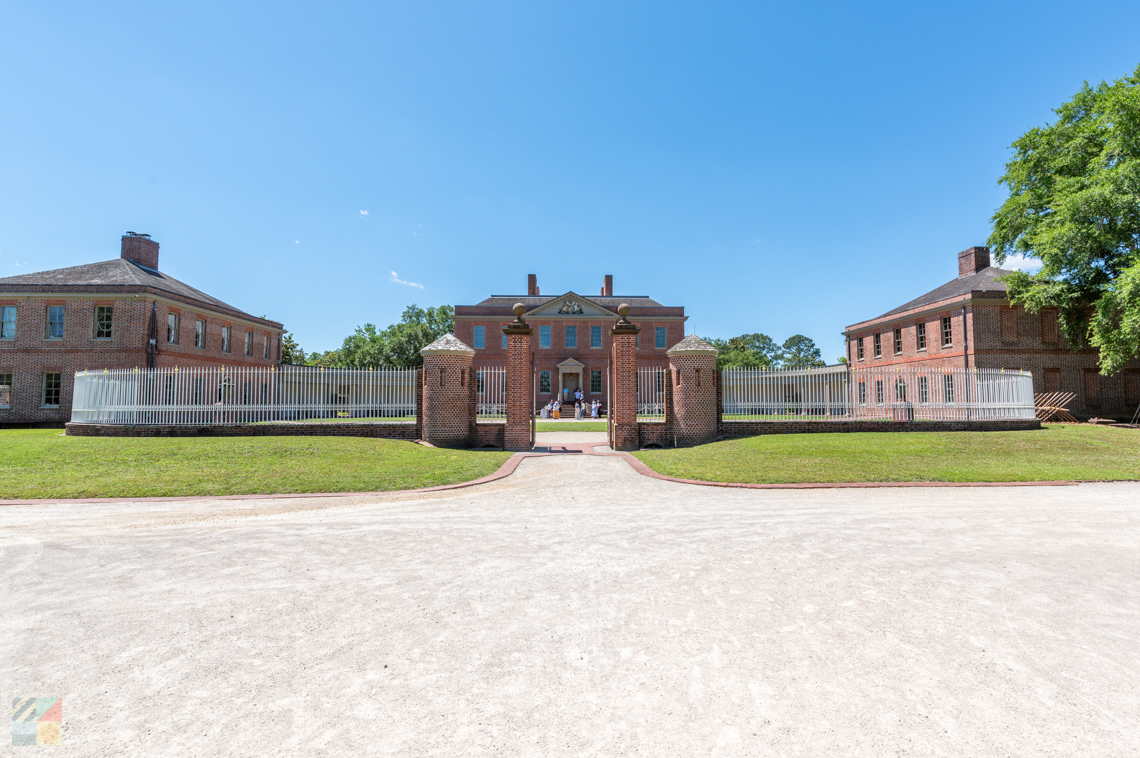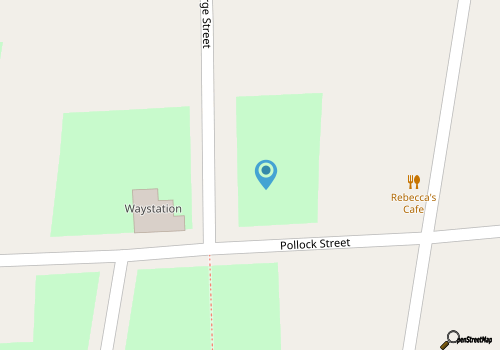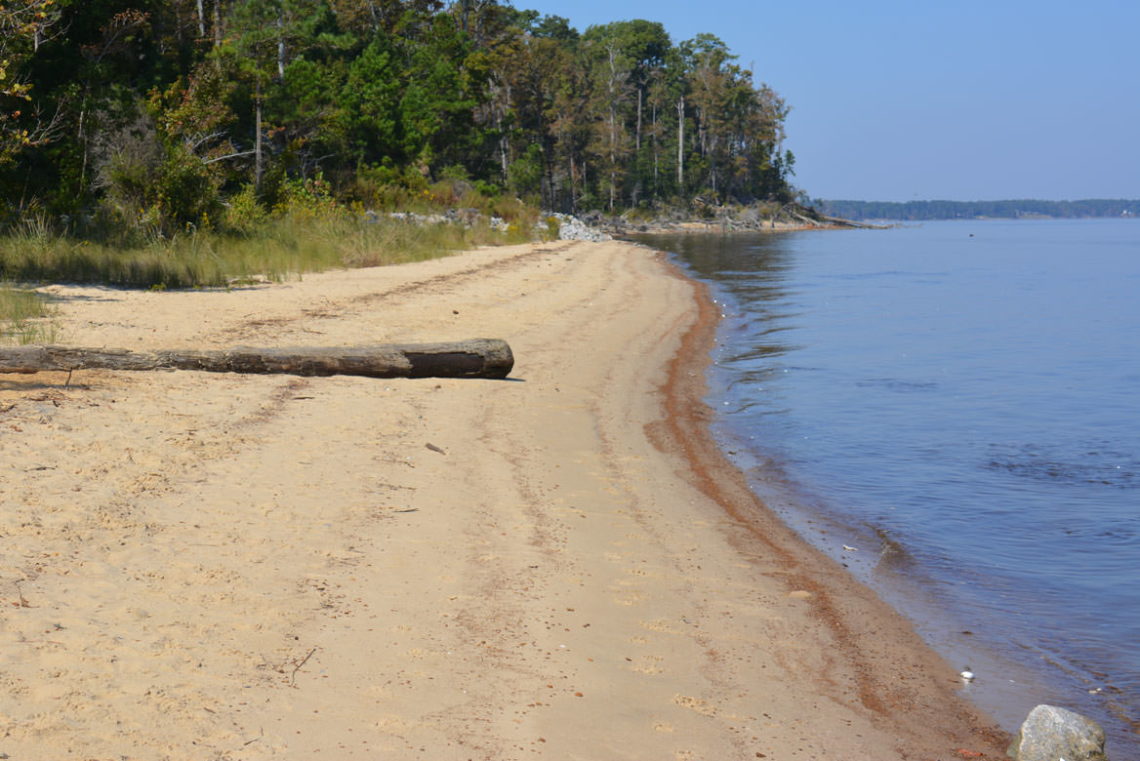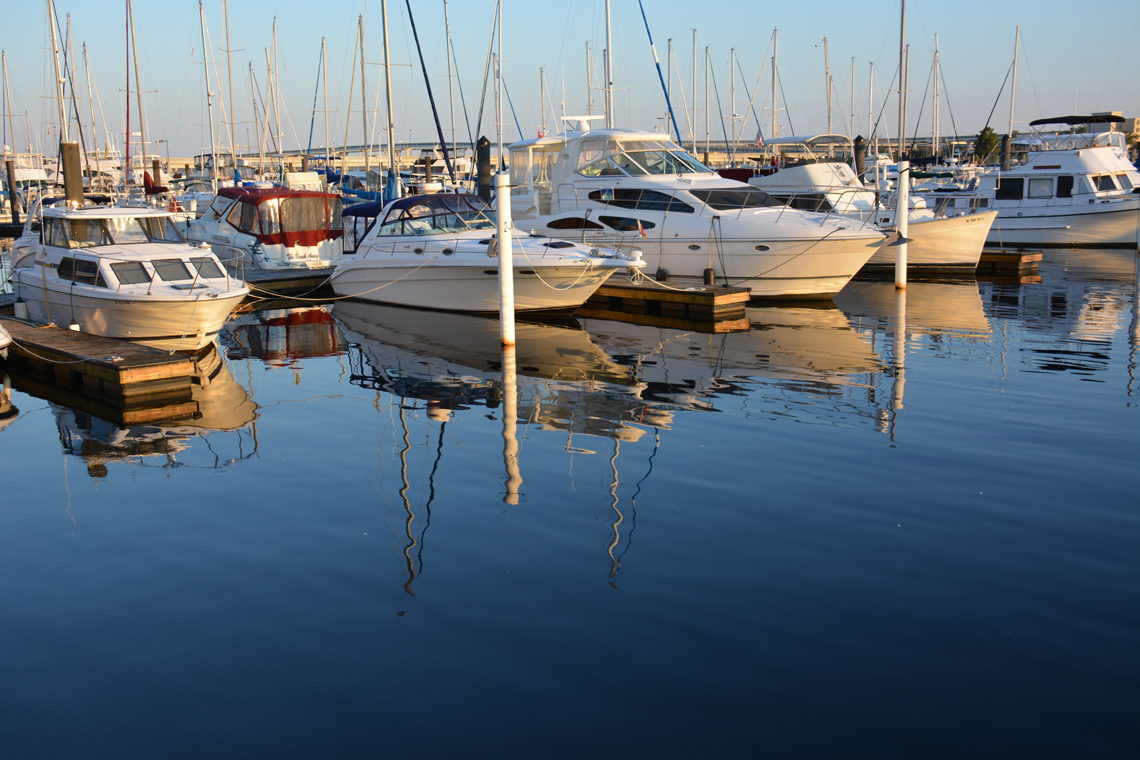Tryon Palace, a colonial capitol, is in historic New Bern, NC, a charming main street town with historic homes dating back to the 18th century, quaint shops, a variety of dining options and breathtaking views of the river. Take a tour of the Palace, enjoy a walking tour, and explore its vast history. Photo credit Ben Lindemann.
Tryon Palace was home to two Royal Governors, Governor William Tryon and Governor Josiah Martin. Governor Tryon lived there less than two years before moving on to a new post as Governor of New York. Governor Josiah Martin arrived in late 1771, but fearing capture from Patriots as the revolution moved toward New Bern, left in 1775. Tryon Palace was the first capital freed of royal rule!
The Stable Office is the only remaining 18th century building remaining of the original Palace complex! It featured stables, a coach house, and harness room, and on the second-floor bedrooms for the stable servant and lofts for hay or fodder. Throughout the years, it been a chapel, school and apartment house, until it was restored during the reconstruction of the Palace.
Palace architect John Hawks’ 1767 architectural plans show that the first floor of the Kitchen Office included the kitchen itself, a scullery for the cleaning and storage of dishes, a wash house, and workspace for the governor’s secretary. For the colonies, this was a very modern, European style kitchen. The second-floor rooms were for servants’ chambers, and laundry.
Tryon Palace is surrounded by beautiful gardens. The Latham Garden (pictured) honors Maude Moore Latham, one of the “Dreamers.” The patterns of clipped hedges, path and flowers reflect a formal “parterre garden,” In the spring this garden showcases a display of vibrant tulips that draws crowds each year. In the fall, a display of chrysanthemums welcomes the new season. e.
Tryon Palace’s Fife & Drum Corps can often be seen performing on the grounds of the Palace or in downtown New Bern during special events like Glorious Fourth, Governor Josiah Martin’s Flight, Garden Lover’s Weekend, New Bern Resolves, MumFest, and more. Check our calendar of events for performances. Tryonpalace.org
Tryon Palace opened the North Carolina History Center in 2010. This beautiful building houses several exhibition spaces, a performance hall and regional history museum. At the Pepsi Family Center, you can time travel back to a river town in 1835, where you can sail a boat into harbor, tap pine trees and distill turpentine, or work at a print shop or general store. It is a favorite with families and school groups.
Also in the North Carolina History Center is the Regional History Museum where you can follow the “River of Light” through centuries of the region’s history and learn about the key forces that shaped the environment. Other exhibits, “Community,” Peopling of North Carolina, “Family Life,” and “Work,” will bring eastern North Carolina history alive with sights, sounds and stories.
Tryon Palace is open Monday through Sunday! A One Day Pass for $20 includes a tour of the Palace, Kitchen Office, and Dixon House, access to all the historic site grounds, Stable Office and gardens, and all exhibits at the North Carolina History. One Day Passes can be purchased online at Tryon Palace.org, or call, 252-639-3525. Also available are Garden Passes and Galleries & Gardens Passes, which can be purchased on site on the day of your visit.
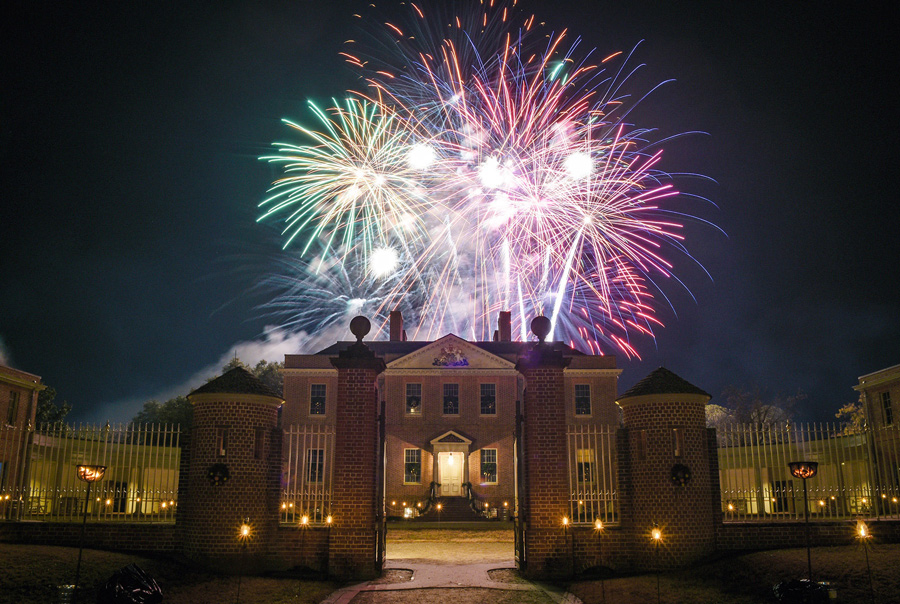
Candlelight is Tryon Palace’s famous holiday event held every second and third Saturday of December. It is a magical event showcasing a decorated Palace with costumed interpreters in each room performing vignettes of a story from the past. The grounds are lit with candles and fire baskets, there are circus, juggling and sword swallowing acts, and of course Santa Claus! Tryonpalace.org
The Neuse River Recreation Area is an inviting rustic vacation destination for seasoned campers and newcomers alike, with an equally alluring location that's just steps away from the miles-wide Neuse River, and just a few miles away from New Bern, Morehead City, and the beaches of the Crystal Coast. Ideal for visitors who want to get back to nature while enjoying a day on the shore, this recreation area can please beach-goers, swimmers, nature fans, birders, anglers, and virtually every outdoor lover in between.
Because New Bern is wonderfully close to two major rivers – the Neuse and the Trent Rivers – the community is a paradise for anglers of all varieties, Featuring ample access to saltwater species, brackish and / or freshwater species, and even great offshore species just 45 miles away or so, virtually every variety of fishing can be enjoyed in this region of coastal North Carolina. From dropping a line off a local pier in one of New Bern’s scenic public parks, to embarking on a full-day Gulf Stream adventure, the New Bern fishing scene can be as relaxed or as ambitious as an angler wants – with plenty of great catches to go around.
Luxurious 5-Star Beach House with Pool and Loft – Sleeps 6Savor your Beach Vacation in this Stunning, 5-Star-Rated Beach Bungalow/House with two bedrooms with full bathrooms for each bedroom on the main floor; the second floor is a complete loft with a queen-sized bed and full bathroom! It also has an inground pool right outside your front door! Located just steps from the humongous public beach access in the heart of Atlantic Beach. This property offers Luxurious accommodations and is ideal for families. The home sleeps nine comfortably and is priced competitively, offering amazing value for the amenities and location.**Property Highlights:**- Second row from the beach - 3 bedrooms with three queen-size beds- 2 full bathrooms on the first floor and a full bathroom in the loft (Second Floor)- Towels and linens are all Supplied- Toilet paper and paper towels are initially included- Totally supplied kitchen with granite countertops and high-quality appliances, including pots, pans, silverware, a coffee maker and spices- Giant family room with an open floor plan- High-speed Wi-Fi, ROKU, and Netflix- Enormous flat-screen TVs in all bedrooms and the living area- Community inground pool with outdoor seating (Shared with only eight homes)- Washing machine and dryer with detergent - Covered front porch overlooking the community pool. (It's great to sit outside and watch the sunrise and sunset)- Board games and cards for entertainment- CPI Security System with a camera at the front door only for your protection (no interior cameras)- The luxury supplied is priced very competitively (Monthly and Weekly Discounts)- Very Clean- Highly charming vacation area for North Carolina Beaches- Painless access to surrounding communities such as Emerald Island, Morehead City, New Bern, and BeaufortIdeal Location for Beach Fun and Relaxation!The home is appealingly located near Fort Macon and close to local shopping, bars, and eateries serving fresh coastal cuisine. You can appreciate a range of activities, from fishing and watching sunrises/sunsets to beach yoga, kite flying, building sandcastles, or simply calming by the pool, go Fishing, Watching the Sunset and Sunrise, Write a Message in the Sand, Make Sand Angels, Sunbathe, Take a Stroll on the Beach, Take Pictures, Fly a Kite, Picnic on the Beach, Build a Sand Castle, Bury Someone in the Sand, Celebrate a Special Occasion, Walk on the Beach, Collect Sea Shells, Day Dream, Meditate, Do Beach Yoga, Meet People, Send a Message in a Bottle, Play Beach Volley Ball, Throw Frisbees, Play Boardgames, Play Tic-Tac-Toe in the Sand, Play Sports on the Beach, Kite Surf, Wind Surf, Body Surf, Ride a Boogie Board, Paddle Board, Jump Waves, Look for Shapes in Clouds, Dig a Hole in the Sand, Rent Jet Skis, Look for Dolphins, Eat Seafood, Eat Ice Cream, visit the Local Bars, Go Shopping, Read a Book or Unwind. Nearby Attractions:- Fort Macon- NC Aquarium- Hoop Pole Creek Nature Trail- AB Water Sports Adventures (Jet Ski)- DragonFly Parasail- Oceanana Fishing Pier- Captain Stacy Fishing Center- Wings Beach Wear and more!Other Features:- Smoke and Carbon Monoxide Detectors- Community gas grille available between Bungalow 3 and Bungalow 4- Anchorage Marina offers weekly and daily boat units for ocean accessThis bungalow is part of a peaceful community and offers everything you need for a memorable beach vacation. With its pristine cleanliness, unbeatable location, and luxury touches, you'll want to return year after year!House Rules:- No home events- No family pets (HOA requirement $500 Day Fine to Renter)- No smokingIf you're traveling with family or friends, the owner has additional properties located in the same Bungalow Complex. Check out these neighboring homes, all with 5-star ratings:- Unit 2: Vacation Rental By Owner #3187037- Unit 4: Vacation Rental By Owner #745900- Unit 8: Vacation Rental By Owner #827345- Unit 1: Vacation Rental By Owner #3336944Mountain House Opportunities: 5 Bedroom Vacation Rental By Owner # 3623971 or 6 Bedroom Vacation Rental By Owner # 3623969Book now for an Unforgettable Vacation in Atlantic Beach, where Amazing Memories Await!Keywords: Premier Host, Beach House, Instant Bookings Accepted, Monthly Discount, Weekly Discount, Families, Sale, Discounted Price, Atlantic Beach, Island Quay, Kitchen, Outdoor Space, Living Room, Dining Room, Smoke Detectors, Carbon Monoxide Detectors, Very Good 8+ Property Reviews, Highly Rated for Cleanliness, Highly Rated for Location, Walking distance from Oceanfront and Oceanviews, Pool, Great Vistas, Atlantic Beach, Quiet, Bungalow, Steps from the Beach, Shopping, Eateries, Water Sports, Wild Horses, Light Houses, Scuba Diving and Snorkeling. This home is Highly Recommended by All Guests! 5 Star Reviews! Book Now!
- Atlantic Beach
- 3 Bedrooms
- 3 Bathrooms
- Sleeps 6
